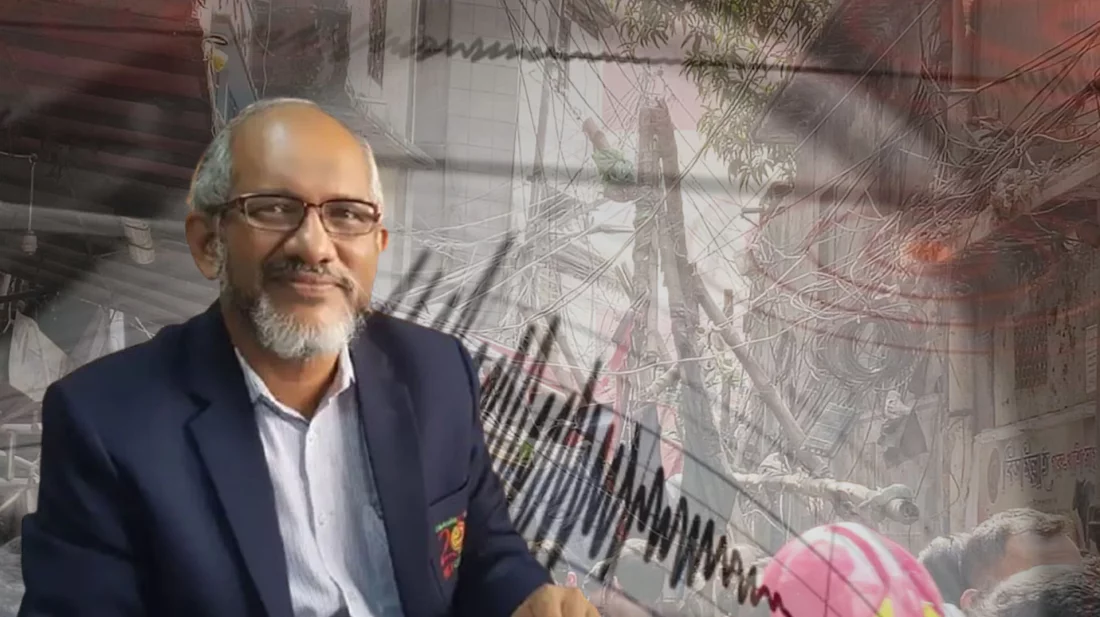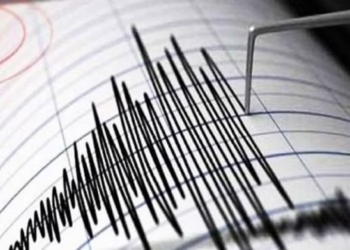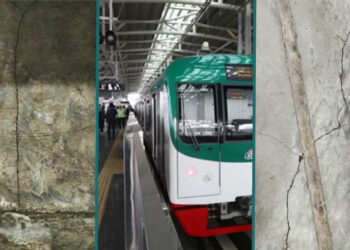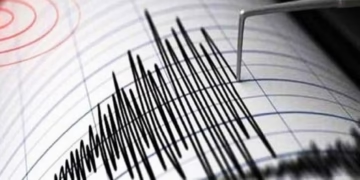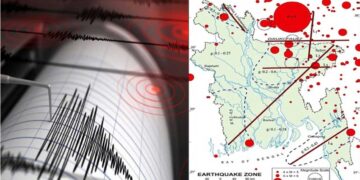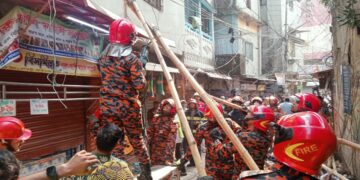Highlights
- A 5.7 magnitude earthquake caused casualties and building damage across Dhaka and several districts.
- Experts warn that a magnitude 7 earthquake in the same region could cause casualties in the hundreds of thousands.
- BUET Professor Mehedi Ahmed Ansari says smaller quakes often act as early warnings before a major seismic event.
- 35% of Dhaka’s 2.1 million buildings are at high risk of collapse in a strong quake.
A 5.7 magnitude earthquake has shaken Dhaka and several parts of Bangladesh, causing fatalities and widespread structural damage. According to geologists, the destruction seen today may only be a fraction of what could happen if a stronger quake hits the same area. They warn that a magnitude 7 earthquake could multiply the losses several times and lead to casualties reaching into the hundreds of thousands.
The earthquake struck at 10:38 a.m. on Friday (21 November), originating from Madhabdi in Narsingdi, lasting nearly 26 seconds. The quake originated 10 kilometers beneath the surface. Reports of cracked walls, subsidence, and structural damage came from various residential areas of the capital, including upscale neighborhoods such as Gulshan and Banani.
BUET Civil Engineering Professor and earthquake researcher Dr. Mehedi Ahmed Ansari stated:
ঢাকা শহরের প্রায় ২১ লাখ আবাসিক ভবনের মধ্যে ৩৫ শতাংশই ৭ মাত্রার ভূমিকম্পে ভেঙে পড়ার ঝুঁকিতে রয়েছে। আজকের ৫.৭ মাত্রার ভূমিকম্পে যত ভবনের ক্ষতি হয়েছে, ৭ মাত্রার ভূমিকম্পে তা অনেকগুণ বেশি হবে।
Translation: “Out of Dhaka’s roughly 2.1 million residential buildings, nearly 35 percent are at risk of collapsing if a magnitude 7 earthquake occurs. The damage we saw during today’s 5.7 quake would be multiplied many times in such a scenario.”
Read More: Dhaka Metro Shaken Hard and Some Visible Cracks Found Across Multiple Stations
To minimize future disaster, Professor Ansari proposed a three-tier building assessment system:
- Green List: Safe buildings
- Yellow/Orange List: Moderately risky, needing strengthening
- Red List: Highly dangerous and must be evacuated immediately
Drawing from lessons after the 2013 Rana Plaza collapse, he emphasized that RAJUK must require all building owners to assess structural safety in accordance with the Bangladesh National Building Code (BNBC). This responsibility should fall on the owners themselves.
He referenced historical seismic data, noting that six major earthquakes occurred around Bangladesh over the past 100–150 years. Since the devastating 8.1 magnitude quake of 1897, the region has not faced a major seismic event, increasing the probability of a large quake.
Describing today’s quake as a “pre-warning”, Dr. Ansari urged immediate building safety surveys and emergency preparedness. He also called for quick implementation of institutions such as CEGIS and IWM within RAJUK under the World Bank-funded project to strengthen seismic readiness.
Source: DBC News

